What was once old is new again. That adage fits very well when discussing linoleum flooring. This flooring type is making a major comeback in homes, businesses and offices alike. If you are choosing new flooring and are considering linoleum, you are in good company these days. Read more to see why choosing linoleum flooring is a good decision you will not regret!
The New Popularity Of Linoleum Flooring
Linoleum flooring is a versatile flooring material that’s making a comeback, largely because being aware of environmental issues like sustainability and the ecological impact our choices make is becoming a more widespread consideration for the general population, from the food and clothes we buy to our home improvement selections. In addition to being an environmentally friendly option, there are a lot of other great features to linoleum flooring that are aiding in the rapid growth in popularity:
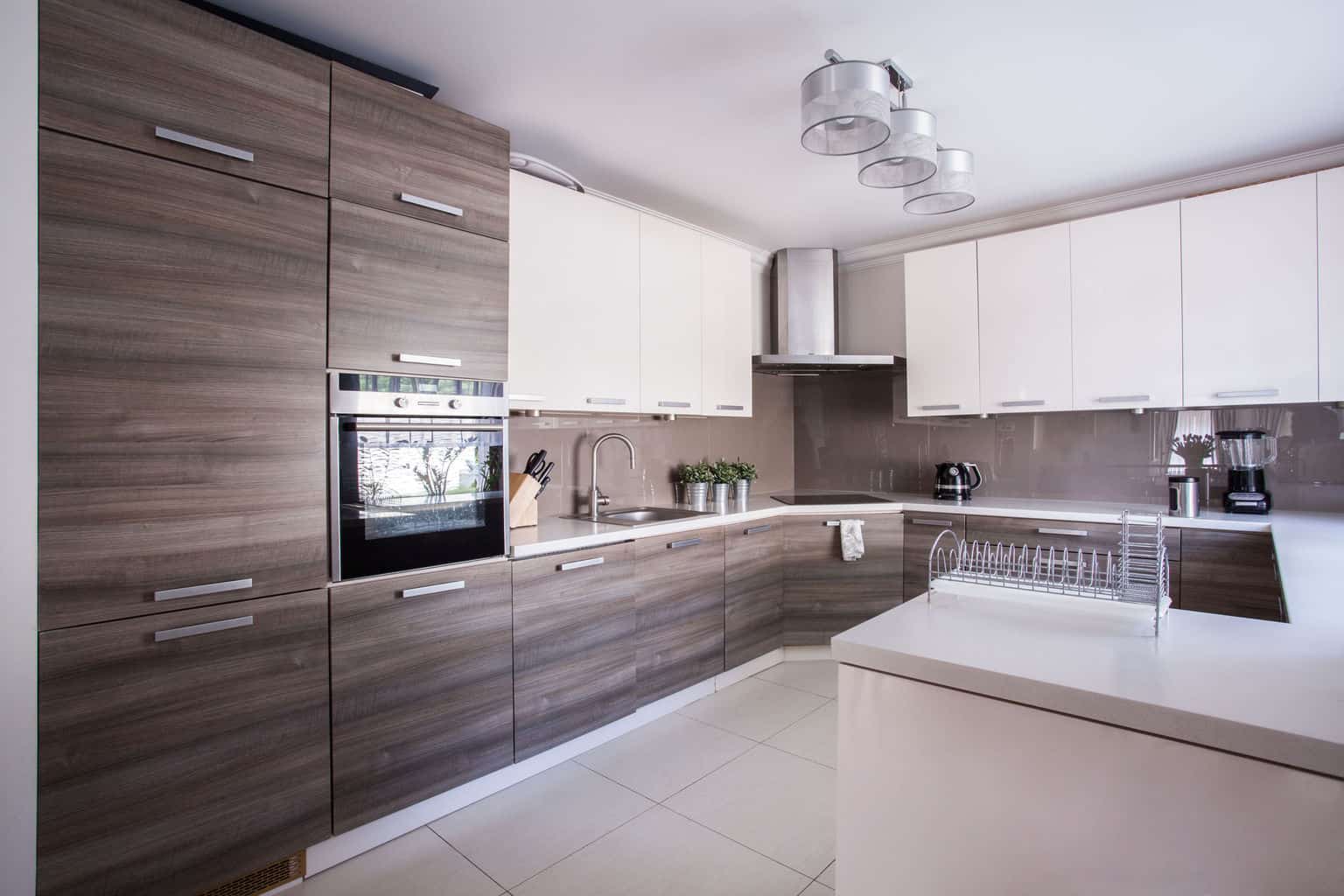
Affordable
Compared to wood flooring, linoleum is much less expensive. Especially if you compare linoleum to environmentally friendly wood flooring options. For example, linoleum on average is around $3-$5 per square foot, whereas cork flooring, a popular eco-friendly flooring option, costs more like $8-$0 per square foot.
Easy
Linoleum is easy to install, easy to find exactly what you are looking for, and easy to maintain and clean. What more could you want from a flooring option in your home?
Durable
Durability is a huge consideration for most when choosing the flooring for their home. Linoleum flooring is one of the more durable options on the market today. It is water resistant, stain and wear resistant, and scratch resistant. Linoleum is pretty much life-proof and yet still beautiful, too.

Ecological
Many are unaware that linoleum is actually made from natural materials: linseed oil, resin, and “wood flour” (essentially very fine saw dust) are the main components used to create linoleum. As we as a society begin to take more environmental impact considerations into our consumer choices, it makes sense that this sustainable, ecologically friendly flooring option is regaining popularity.
Attractive
Linoleum can come in any style and color choice you can think of. It’s also paintable, so you can change it in the future. Also important is that the colorway goes all the way through the material with linoleum flooring, so scratches are less noticeable. Tiles and rolls of linoleum are also available in any width, so finding the design match of your dreams is easy.
What You Should Know About Lino
Did you know you can even use linoleum for countertops? If it holds up to being walked on, it surely will endure kitchen abuse; I love my linoleum countertops! One advantage of linoleum is that the color goes throughout the material; it’s not just a thin top layer. That means when your linoleum floor is scratched or nicked, the damage isn’t as obvious because the same color comes through as is on the surface. This also means that you don’t have to spend anything on polishing after some time. Unlike other materials, linoleum will never fade or lose its shine.

Linoleum was invented in England 1863. It was one of the most popular flooring choices for many years, until vinyl flooring came on the market at an even lower price-point. There are many people to this day who confuse linoleum for vinyl, largely because of the close competition between the two in the early days of vinyl and an intense marketing campaign by vinyl manufacturers. While the terms “vinyl” and “linoleum” are often used interchangeably, really these are two very separate products at their base. Linoleum is made of natural materials and vinyl is comprised entirely of synthetic materials.
Partially due to a recent growth in popularity, linoleum is being manufactured all over the world now. Each linoleum manufacture has its own trade name for the product (Marmoleum and Armstrong Linoleum being a couple popular examples).
Roll And Tiles And All The Styles Of Linoleum Flooring
Options are endless when it comes to linoleum floors. Painting linoleum floors is an interesting option for some situations. Also, linoleum tiles can be laid in any design you might want. As far as the style you want, linoleum tiles and rolls are both good options and selecting which type you choose for your home will depend on the final effect desired. Each type will result in a different look and each type will use a different installation technique.

A roll of linoleum flooring can give you a nice, seamless look that is very sleek and modern. This is definitely a good look especially in a larger space where tiles can end up looking a bit busy and overwhelming. To install a roll of linoleum flooring, you’ll need a level underlayment (like plywood) and a flooring adhesive. You’ll also need a sharp tool for cutting the linoleum to size and a heavy roller for getting out any air bubbles as you roll it out.
Installing linoleum floor tiles is a similar process, though the end result looks quite different. You will still need a level underlayment and a good flooring adhesive, as well as a sharp tool for cutting the tiles to fit. Many find the process of laying tiles to be simpler than dealing with a large roll of flooring, as it’s easier to maneuver tiles.
The linoleum manufacturer should supply you with or at least recommend a brand of adhesive for their linoleum, but typically any quality adhesive designed for linoleum will be about the same. Here is an example of a brand of flooring adhesive I’ve used and been pleased with for linoleum in the past available on Amazon: Weldwood Flooring Adhesive.
Where To Install Linoleum Flooring
The versatility of linoleum is one of the major selling points. Linoleum kitchen flooring can be used not only on the floor, but also as a durable, water-resistant countertop. I love the look of linoleum in the kitchen, in addition to the functionality. It also has a nice softer and warmer feel underfoot than many of the ceramic tile options, making it more pleasant for bare feet.
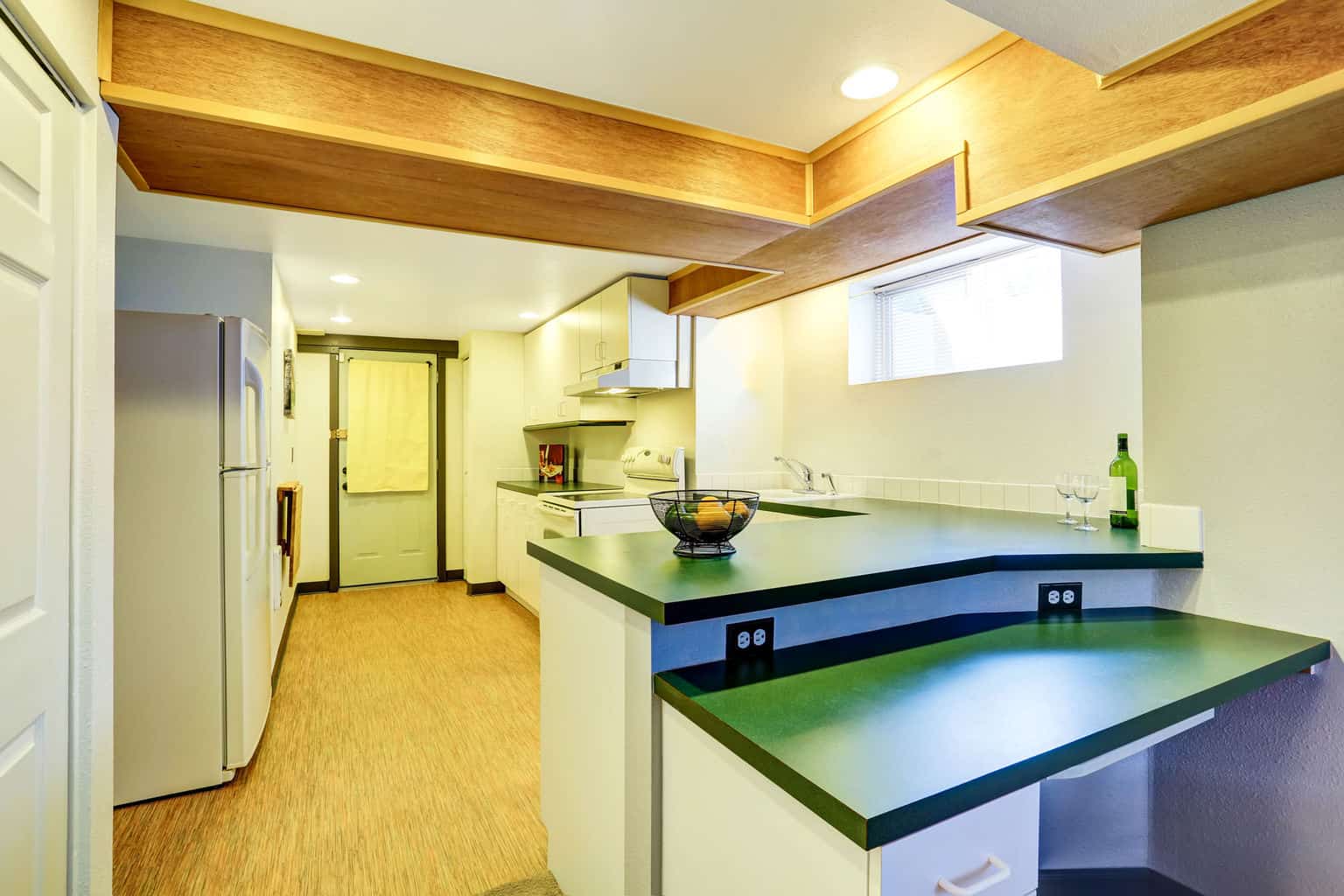
Linoleum bathroom flooring will handle all the water splashing better than many other types of flooring you could choose. Linoleum is a great choice for laundry rooms for this reason, as well.
Linoleum is also naturally antimicrobial, making it an excellent choice for anywhere there are children! I always recommend linoleum flooring for daycare centers and doctor and veterinarian offices, for these reasons. You can install a rolled linoleum flooring up the wall a little ways if you are installing it in a room where you anticipate a lot of spills or mopping will take place. This will protect the lower portion of the walls from water damage, as well.
Maintaining Your Linoleum Flooring
One of the greatest aspects of linoleum flooring is that it is waterproof! You don’t need to reseal it or polish it or apply costly (and toxic) shellac. Simply sweep, vacuum and mop on your linoleum floors as needed, and they will continue to last and shine for decades! Because the color on the linoleum flooring is applied throughout the material, small scratches or dents are not noticeable the way they would be on something like a laminate flooring where the color or pattern is applied only on the top layer.
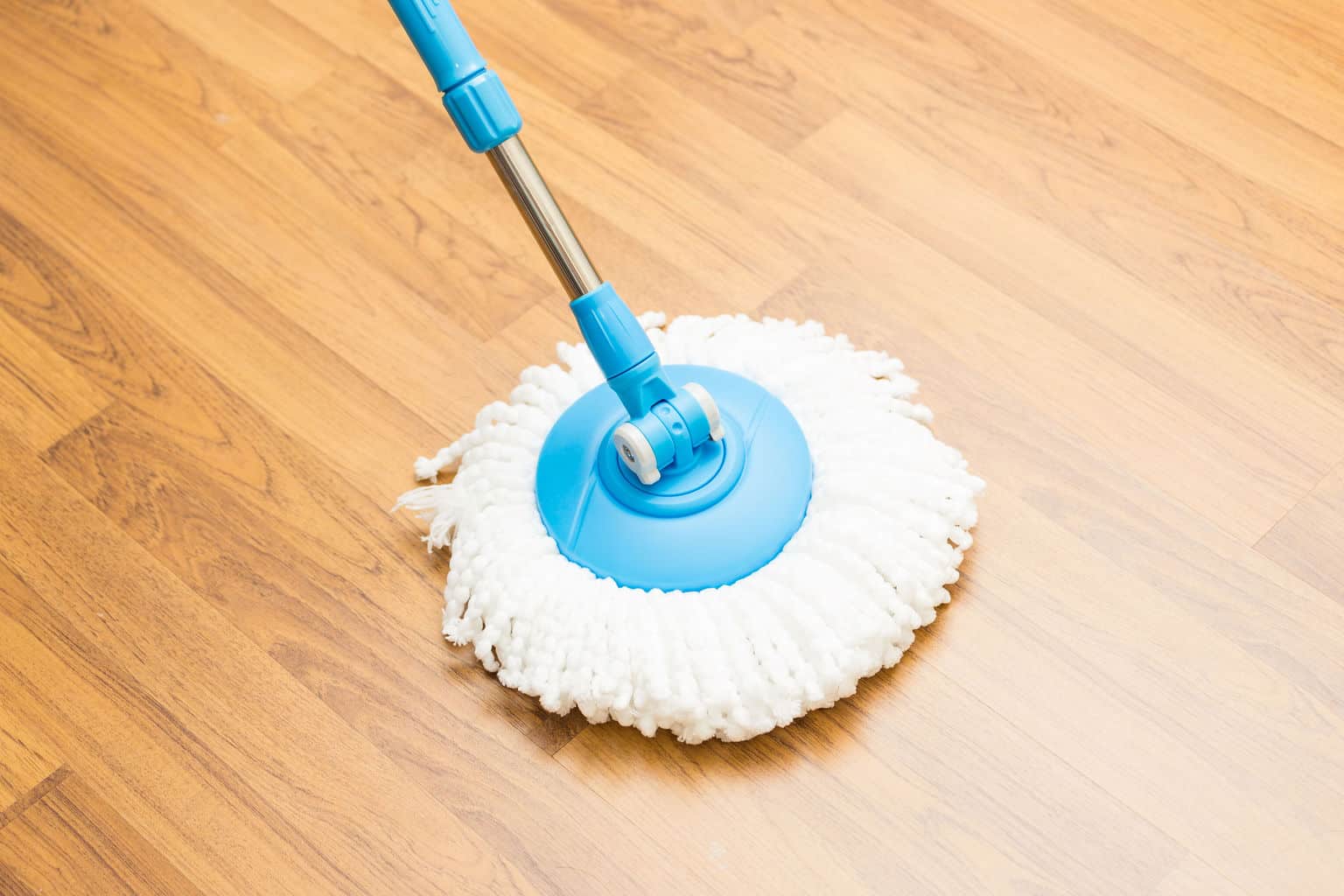
The “bloom” is something you will want to consider when purchasing linoleum flooring. Some complain that their laminate flooring takes on a yellowish staining over time. There are a couple of reasons for a change in color to linoleum flooring. The first is a change in color that is a result of the natural materials in the linoleum coming into exposure with sunlight, often referred to as a bloom. While this is unavoidable, you will simply want to take a sample of the linoleum flooring you are choosing and leave it sitting in the light in the room where you plan to install the flooring for a few days prior to purchasing the flooring to see how the light in that area will affect the color of the linoleum. The other cause for yellowing on linoleum flooring is a result of the antioxidants in rubber coming into contact with the linoleum materials. Avoid using rubber-backed rugs or carpets and rubber protectors on the feet of your chairs and tables on your linoleum, as this yellow staining is irreparable (though you could always try painting your linoleum, if this happens.
Environmental Considerations Of Linoleum Flooring
Linoleum flooring, no matter where you place it in your home, is durable and can last for many decades. Linoleum is made from non-toxic and natural components. This means that at the end of its long and useful life, linoleum flooring is biodegradable. This is one reason why it is attracting a lot of people. It has been amazing how people have become conscious about things like environment friendly paints and floorings when it comes to flooring their home. Anyone who believes that it is high time that we all become a lot more responsible socially should endorse the use of materials that are harmless to the environment.

Linoleum floors are made from all natural materials, like linseed oil pressed from the flax plant, pine resin, wood flour, cork powder, natural pigments and jute. Based on these environmental factors of linoleum, this type of flooring is increasingly chosen before vinyl. Because of its durability, there is more linoleum kitchen, laundry room and bathroom flooring being installed than we’ve seen in a long time. Its toughness and comfort complement each other, making linoleum a solid investment. Since it is sourced from natural sources, the availability of the raw material is never a problem.
Also important to consider about real linoleum flooring is that it is formaldehyde free and there is no off-gassing. This means choosing linoleum flooring for your home is a significant investment in the health and well-being of your family.
Refinishing Linoleum, Painting Possibilites
When you get tired of the linoleum flooring you have, you have various decorating options, such as painting the linoleum with a pattern or a different solid color. Painting your linoleum is a good way to refresh your linoleum without having to remove or replace it. You can also lay new linoleum flooring on top of existing linoleum, if you choose a new style. What a great environmental decision! The same cannot be said about other prominent flooring options available today. Most of them need to be removed completely before replacing them with something new.
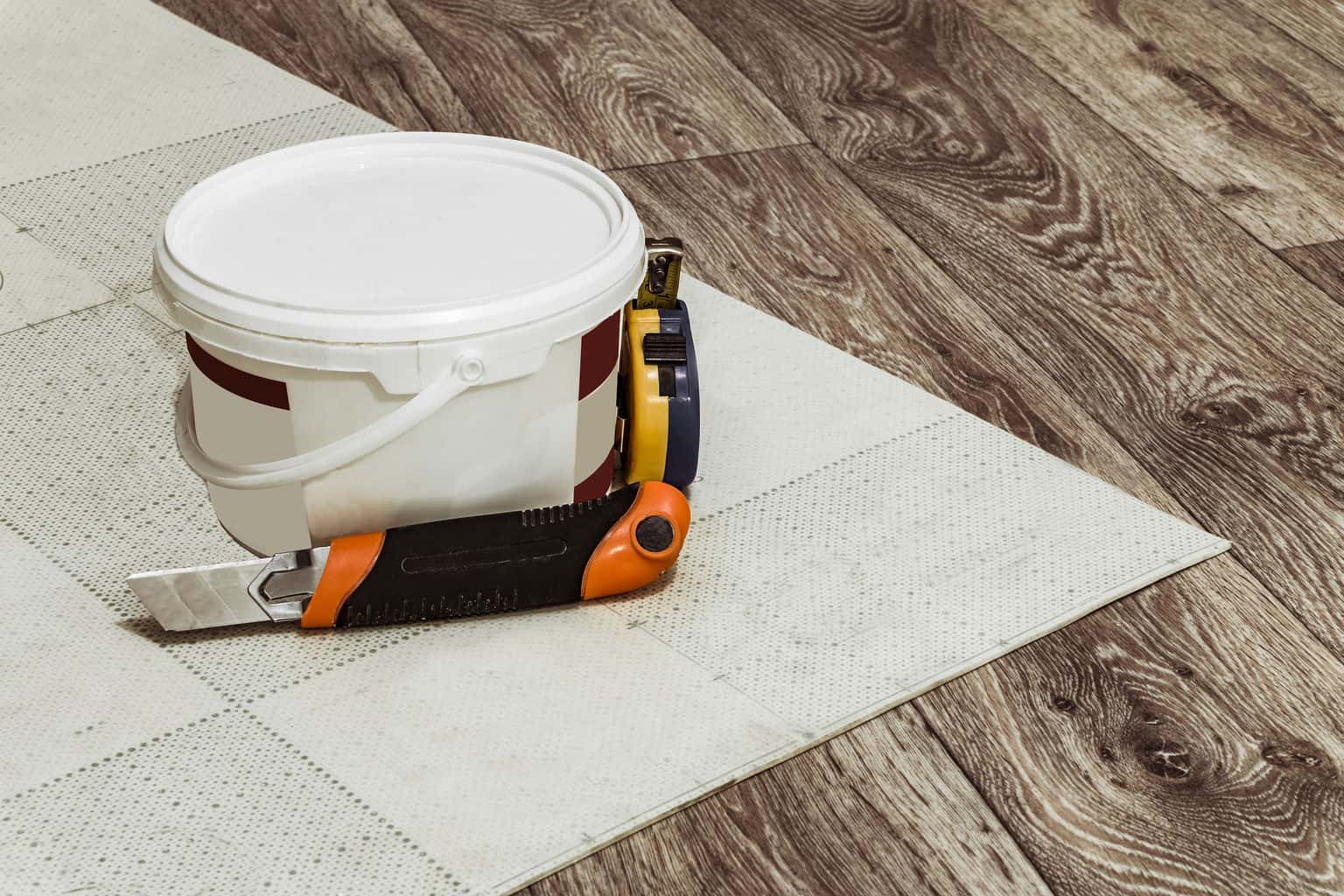
Also, the disposal of other flooring materials poses serious threats to the environment. There are very few people who take the pain to dispose of old flooring properly. Most just prefer dumping it in the next vacant plot. Linoleum, however, is biodegradable.
The Downside To Linoleum Flooring
- The price: Linoleum is a bit higher in price than vinyl. While linoleum is very affordable, if cost is the main motivating factor, the price may be a little too high because it is more expensive on average than most vinyl flooring.
- Not as extravagant: Linoleum is not known for a high-end, luxurious look. While it is extremely functional and can be very modern looking, some worry that installing linoleum will not have the same value-add that installing another more high-end flooring type will.
- Installation: While linoleum is not particularly difficult to install, it is not as easy as simple click and lay laminate plank flooring options. Dealing with adhesive, measuring and laying the tiles, or maneuvering the large rolls of linoleum may be a larger task than some DIY-ers are willing to take on. This may mean hiring a professional to install your linoleum flooring, which does add to the overall cost.
- Chemical exposure: Linoleum is a natural material and is eco-friendly, but most of the adhesives that need to be used when you are installing linoleum flooring are not. If exposure to chemicals are a major concern, you will need to hire a professional to install the linoleum flooring, again adding to the overall cost per square foot of the linoleum flooring.
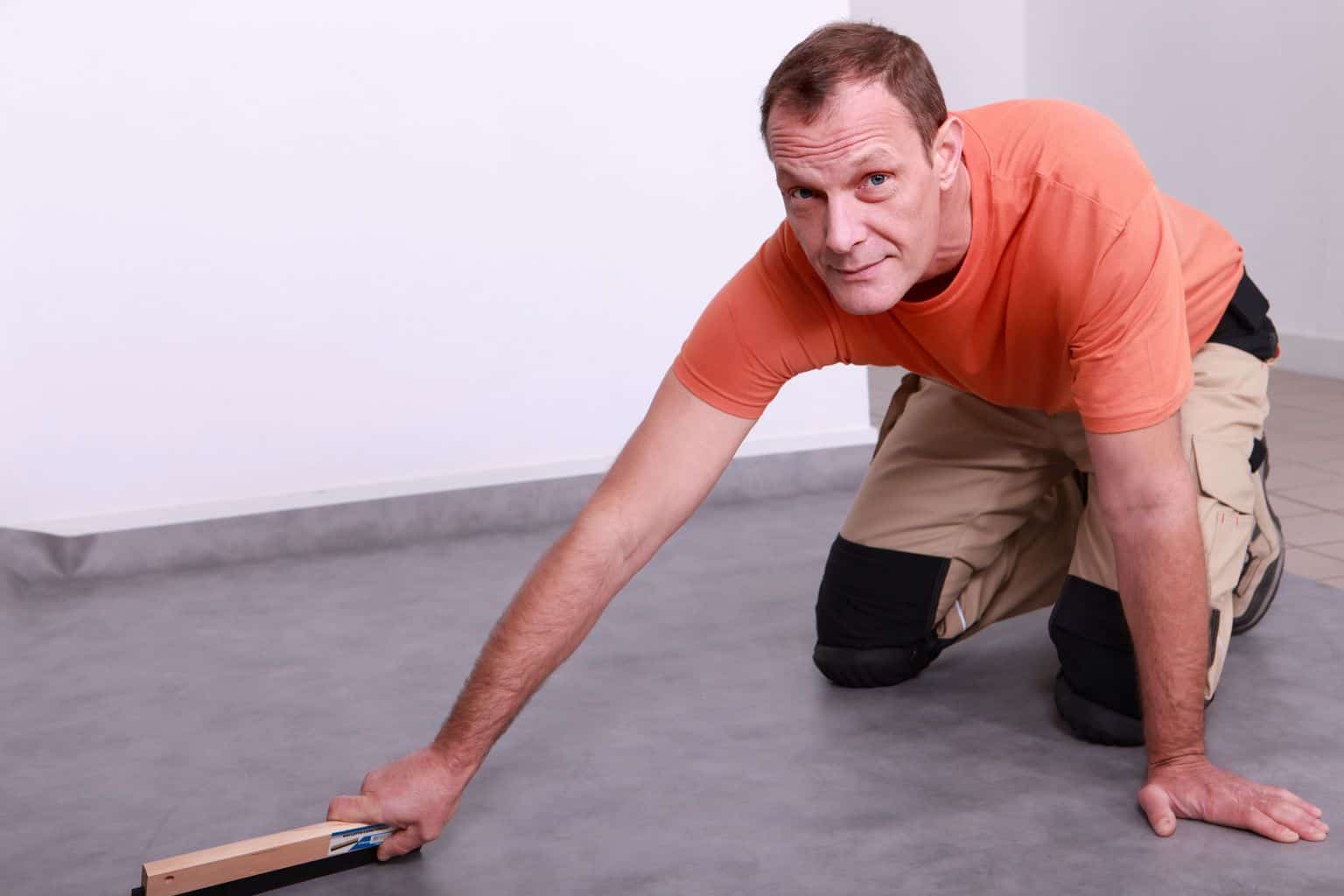
Linoleum can be more expensive than other floorings such as vinyl, but the cost is worthwhile in most situations because the durability of linoleum flooring far outlasts vinyl. Because of its environmental attributes and longevity, linoleum really is worth the slightly higher price tag and the additional effort to install.
If you take the time to compare the pros and cons of linoleum you will see that, in many situations, the pros outweigh the cons. Linoleum can be a great choice for any room in any home. If you are looking for a water-proof, durable, inexpensive flooring option, choose the long-lasting environmental flooring that will continue to look great for decades to come.

Hello – I think we have uncovered very old lino floors in our house – as we are on a very tight budget I was interested by your comment about painting it ? What would you suggest painting it with ? is it possible to paint it in an eco-friendly paint – would be a shame to use a non environmentally friendly paint if the floor itself is such an eco choice ..
One reason your old floor is eco-friendly is because it’s there and no more resources will be consumed to create it or install it. Keeping it is a great idea, if the floor is in good condition.
Sherwin Williams has an eco-friendly paint that I think would work. The paint itself isn’t always the issue but what you seal it with. Clean the floor thoroughly and let it dry completely — maybe for a few days even — before painting. Depending on its color and the color you are going with you may want to prime it; your paint store clerk can help you decide that.
A plywood floor I painted once came out well when I used the system of a dual-roller and dual-paint pan system so I could apply two colors at the same time. Most home improvement stores have this system. It’s a lot of fun and you can create the look you want easily. I think that could work for you too, especially if you are thinking of a marble-ish looking floor.
Then, when you have the floor painted the way you want apply several coats of Diamond Coat Varathane Urethane formulated for floors. And enjoy!
Hi, I am also getting ready to paint my lino kitchen floor. I know I must lightly sand with to degloss (wet sanding avoids any inhalation of possible asbestos I’ve heard) I know AFM Safecoat has both an Eco Friendly Primer – should I use Oil based or water based? And then finally I was wondering what type of paint I should use, flat, gloss? And any eco-brands you can recommend. Thank you so much!!!! I’m a bit nervous but I have to go for it while my kid is gone for seven days. Safe coat also has a low VOC polyurathane.
If you have an old linoleum that may have asbestos, be sure to wear a mask as you sand and make sure the residue is cleaned up thoroughly before taking the mask off. But before you sand, see if you can find a product that will degloss the linoleum without roughing up the surface — that will be safer in regards to asbestos.
I’m all for water-based primers, paints and finishes. Oil based has high VOCs which contaminate your air quality and impact your health. Sherwin Williams has an eco-paint that I like very much.
I have also been quite pleased with water-based Diamond Coat Urethane I have on all of my cabinet. Their floor product should be just as fabulous. The link to them is in this thread.
How can I replace my 1939 linoleum small kitchen countertop (which I like but is damaged) with a new one that is an exact copy? Mine is green and has a yellow border cut into it. (So there was some simple cutting of linoleum involved.)
I don’t know that you’ll get an exact copy of your present countertop, but you can buy the green and yellow linoleum and find someone to install it for you. Take lots of pictures before so you can remind the installer what it looked like, even though they should remember from the demolition portion of the project.
Oh Dear,
Thankyou for you last reply. I finally just went for it and decided to paint my linoleum kichen floor however during the process I’ve come across a big problem. After almost three weeks of meticulously cleaning, sanding, painting my kitchen floor ( a beautiful espresso brown) I waited more than three weeks to allow the paint to dry and cure properly before applying the polyurethane, Finally today was the day I have been waiting for to apply the polyurethane and I did so over 3 hours ago and!!!! I can see terrible milky brush marks all over my beautifully painted floor, all over the place! I thought it was supposed to leave it clear and satin smooth. I am beside myself as to what to do next. Will the second and third coat make it look better? Should I sand the blotchy spots and apply more polyurethan on top? By the way we made sure the room tempreture was perfect before starting the polyurethane – we used AQUAZAR Water Based poyurethane – Satin Clear. Help! I’ve been going crazy without my kitchen and now I just don’t know what to do to fix this. Any advice would be most appreciated. Thank you so,so much. Mika
I called my paint store about this for some ideas. Their first reaction was to never paint vinyl flooring (and I couldn’t get him to understand there is a difference between vinyl and linoleum). So, are you sure your floor is linoleum and not vinyl?
Once I got him past that issue he said that not all water-based polyurethane’s are to be used on just any surface. In fact, he indicated most are to be used directly on wood or as additional coats on themselves. Sherwin Williams does have a water-based polyurethane that can be used on paint. Check your product to see what surfaces it says it can be applied to.
Don’t hesitate to call the manufacturer for input. They may have ideas about the problem and therefore a solution. Please let us know what you learn.
I am an artist who paints with oil and am creating a small art room adjacent to my laundry room. Is linoleum a good option for flooring for these two rooms? Can solvents be used to clean any paint drips I may make?
You clearly understand the challenge of using solvents to clean floors. Linoleum is a durable flooring, but it will be abused by the use of solvents on it. I haven’t done that, but I can feel confident there will be damage — I just don’t know what the damage will look like. Linoleum color goes throughout the product so you won’t have spots with no color, as you might with vinyl.
I’m not sure what your best bet is with your floor options. My sister-in-law has a concrete floor in her art studio so she doesn’t have to worry about dropping oil on it. That could be an interesting option for you too.
I am trying to find linoleum to install in my kitchen. I can’t find any with any color or design. Do they just make it plain or wood grain? I would love a retro look. Thanks.
I don’t mean to sound flippant, but where are you looking? Depending on where you live there are lots of places you can look. A flooring store that caries Forbo (marboleum) or Armstrong (marmorette) will be able to get linoleum for you. I don’t know if there are any wood-grain linoleum products but there are lots of great colors and textures available.
Hi
I have 3 or 4 different pieces of very old linoleum up in my attic. Evidently, they were used in the house at one time, then removed and placed up stairs. I don’t think they were ever glued down, because of the large pieces. Some are ripped, but I bet all the pieces are there and could be put down almost seamlessly by a professional. I doubt any are room size, but would make interesting floor cloths. One is a child’s floor in blue, pink and white with bunnies and other cuddly animals on it. I also have 2 pieces, 1 in ea of my bedroom closets that are not glued down, which I plan to remove and replace with carpeting. I still have some in my up and down stairs hallways that is glued down. Eventually I want cover it with carpet, even though I know there is wood flooring underneath. I ripped up part in my front foyer which is very small, but it was murder to get up! Finally managed to do it and refinish the southern yellow pine floor underneath it. Do you know of anyone that buys ands sells this vintage stuff? I’d like to sell all the loose stuff because I really need the $$$, and someone might find the floors I have just what they’ve been looking for.
Hi Connie,
I sure don’t. You might try using your favorite search engine, maybe you’ll at least find out if there’s even a market for it. Sounds like some neat stuff if you can just find a buyer – it’s definitely better than sending it to a landfill!
I have picked out an Armstrong Marmorette floor for my kitchen. How resistant to scuffing, staining are today’s linoleum floors. I have found mixed reviews on the internet from love it to run as fast as you can and do not buy this product.
I think today’s linoleum floors are pretty darn great. I had one installed almost 4 years and it has held up wonderfully despite being in a very high traffic area of the house.
A friend of mine has this very same product on her counters – no, I’m not kidding. She didn’t wax
it, as Armstrong advised due to concerns of having the wax come in contact with perhaps food, articles used for food, etc. She has a few places that stained when rusted steel sat on it, but it’s minor – and keep in mind – it’s not waxed or coated with anything. She keeps it looking quite good with no effort. The counters are five years old and going strong.
Scratches don’t show on linoleum the way they would with vinyl. On her countertop, you do see them, but who wouldn’t when you are 2-3 feet from them, but they aren’t glaringly obvious even at close look.
So…….. yes, I like today’s linoleum
Can I use Armstrong’s lenoleum Migrations BBT on my garage floor, light auto traffic.
Thanks, Joe
Armstrong BioBased Tile should work fine I’d think. Accoring to a press release Armstron(tm) MIGRATIONS is ideal for schools, healthcare, mass retail and any other commercial space that requires a long-lasting, good-looking, economical and easy-to-maintain flooring solution…..”
Link to press release is here.
I don’t know if it makes a difference to you, but it’s also LEED certified.
Which linoleum (if any) is most “green”? Does any flooring off-gas?
Hi Mary,
Believe it or not, that’s a rather difficult question! Manufacturer’s are jumping on the environmentally friendly bandwagon by leaps and bounds, so much so that it’s hard to keep up with who is now the ‘greenest’. Best thing to do is visit manufacturer’s websites and read. Most manufacturer’s seem to tout about how green they have become on their home page.
Most manufacturer’s now have products that are low or no VOC (the off-gassing).